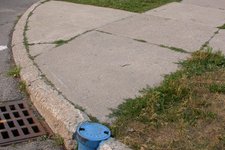
Trip and fall cases are interesting because of two competing defenses:
1. That the defect was so small as to be “trivial”; and
2. That the defect was so large as to be “open and obvious.”
In this case, the defendant prevails on the first of the two defenses:
The plaintiff asserts that there was a height differential of 5/8 of an inch between the two surfaces, and contends that this height differential caused the accident.
“[W]hether a dangerous or defective condition exists on the property of another so as to create liability depends on the peculiar facts and circumstances of each case and is generally a question of fact for the jury.” However, a property owner may not be held liable in damages for trivial defects, not constituting a trap or nuisance, over which a pedestrian might merely stumble, stub his or her toes, or trip. In this case, the defendants made a prima facie showing, through the plaintiff’s testimony and the photographs identified by her as accurately depicting the condition of the curb cut at the time of the accident, that the alleged defect did not constitute a trap or nuisance and was merely a trivial defect which was not actionable as a matter of law. The evidence which the plaintiffs submitted in opposition to this showing failed to raise a triable issue of fact.
If a defendant does not prevail on one, a claimant should expect the defendant will then pursue the other.
The case is: Joseph v Villages at Huntington Home Owners Assn., Inc.